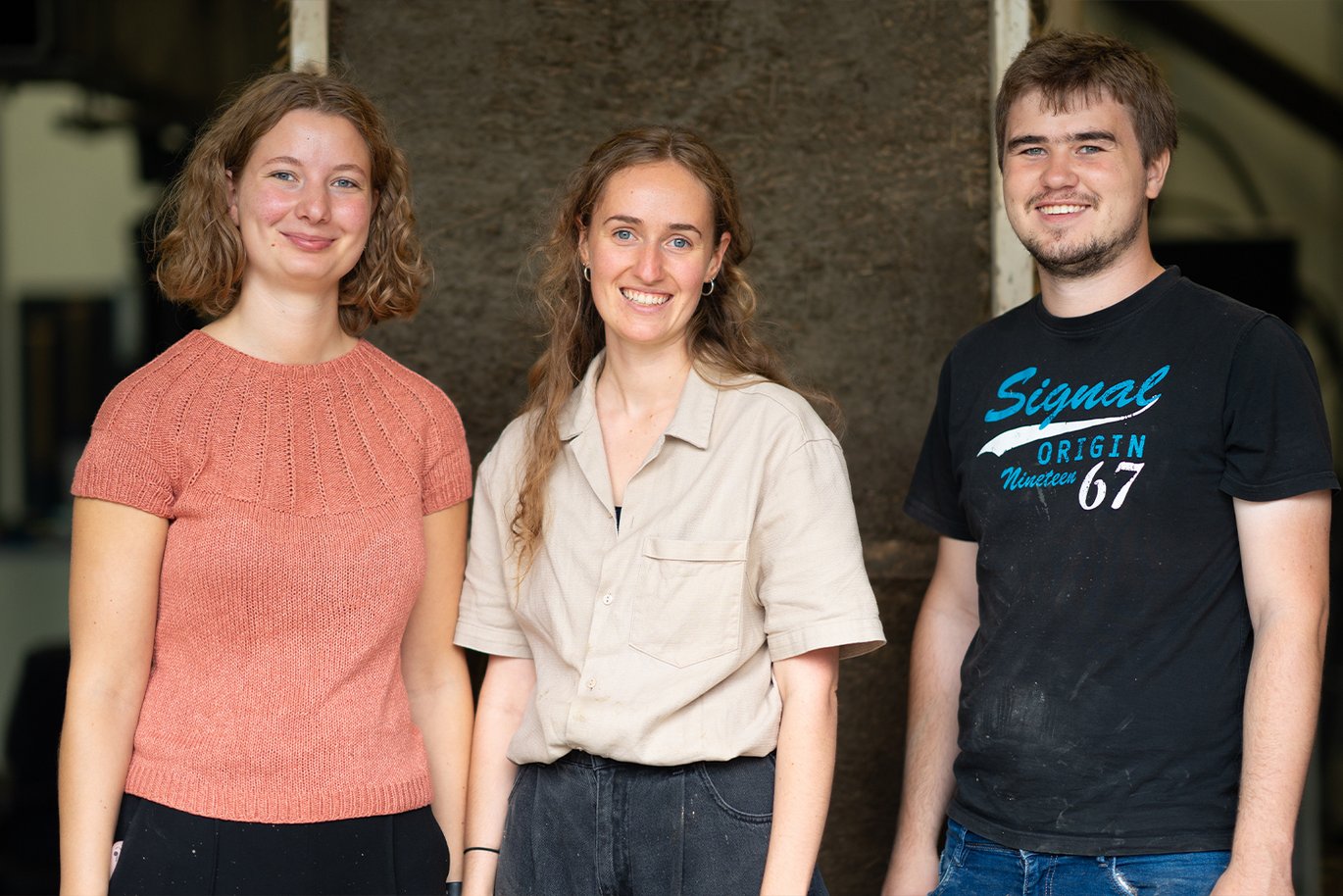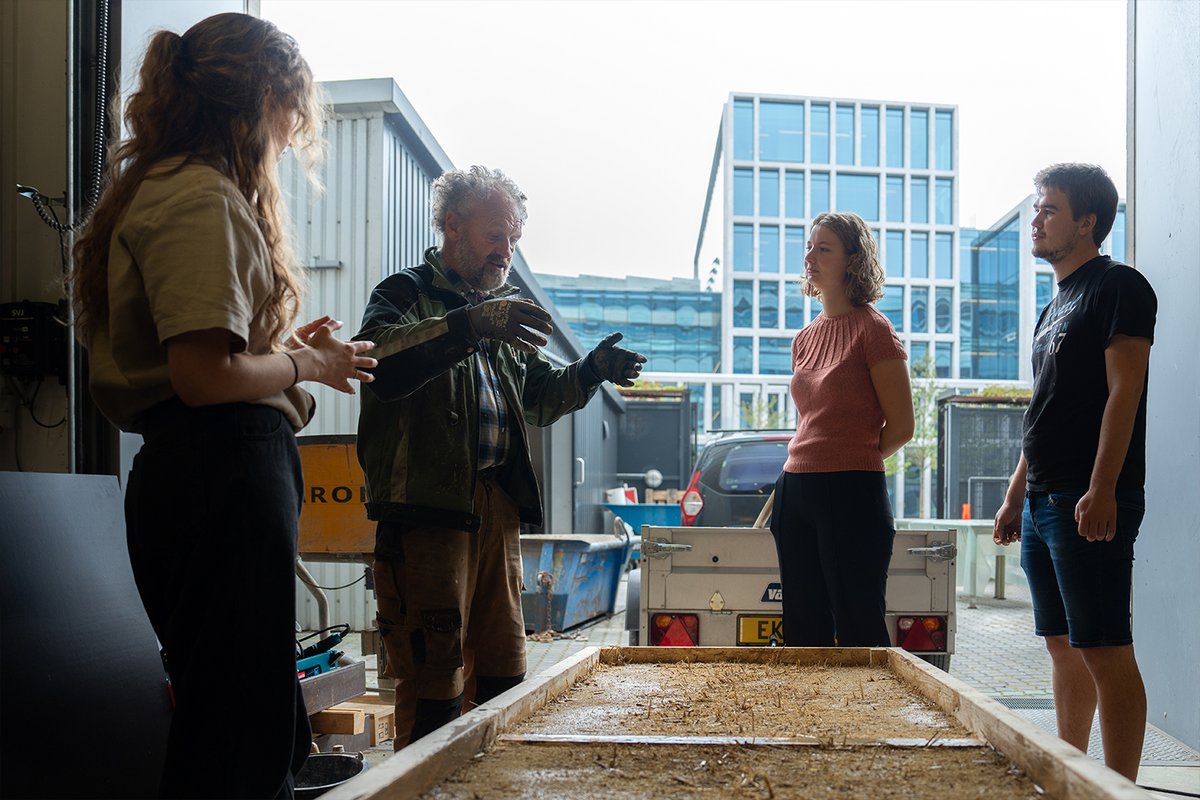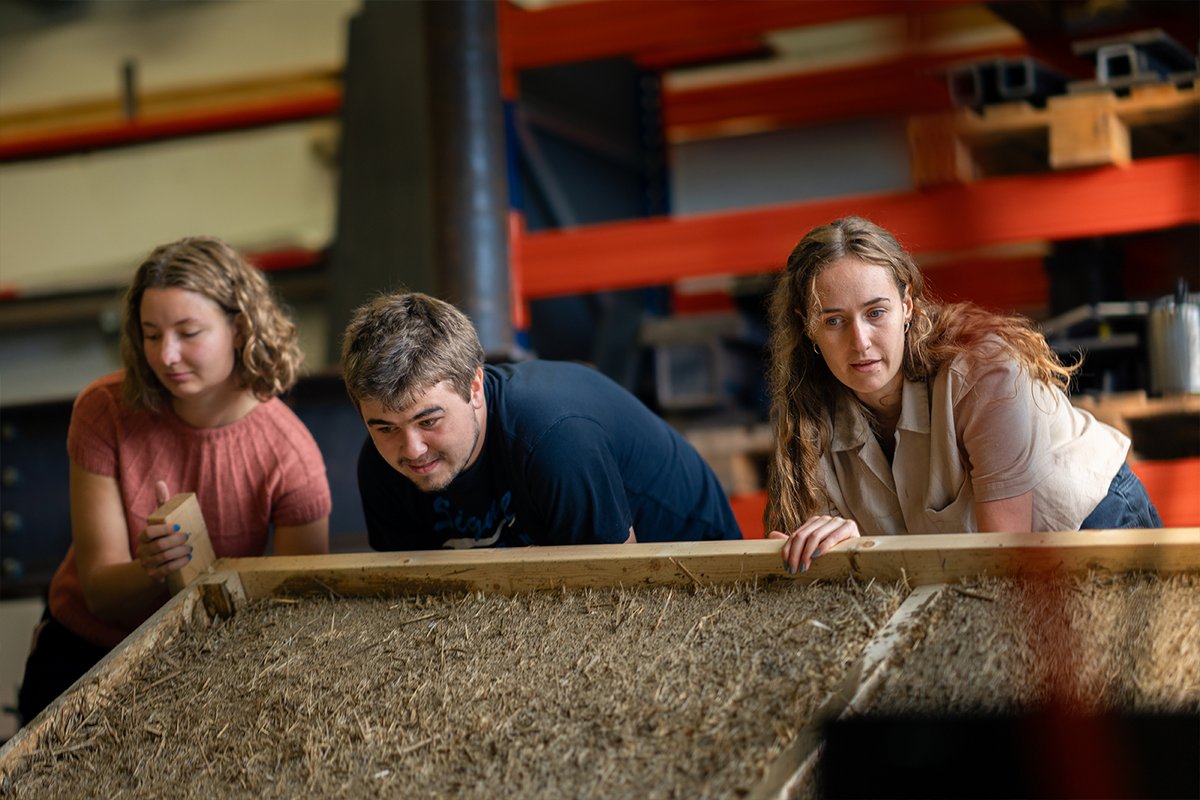Clay and straw could be the building materials of the future
Homes with load-bearing structures made of wood, straw and clay could be the sustainable future of building and construction, if the materials meet the strict requirements of the industry. A group of engineering students at Aarhus University are investigating precisely this possibility.

How strong is a wall consisting of compressed straw in a wood frame with a thin cladding of clay? And could it be used in the Danish building industry of the future?
In the laboratory for load-bearing structures at Aarhus University, the three civil and structural engineering students, Anne Emilie, Claus and Helene, are building three such walls. The middle section, consisting of hard, compressed straw, is to be covered with a five-centimetre-thick cladding made of a special clay mixture. And since very few people use wood, straw and clay in the Danish building industry today, the students have to construct the buildings themselves in order to make calculations, as this type of element has not been seen before:
“There are no binders to hold the clay in position, but we spray it on so it adheres to the straw ‘prickles’ sticking out. The clay thereby forms a barrier that should serve as a building envelope,” says 25-year-old Claus Pedersen, who — like his fellow students — is in the seventh semester of his engineering studies.
The goal is more environmentally friendly building materials than the concrete, traditional insulation and bricks we use today.
Modular construction techniques
Today, construction accounts for a large percentage of global anthropogenic carbon emissions. In fact 39 per cent of energy-related carbon emissions. Approx. 11 per cent is from material extraction and construction projects, and the remaining approx. 28 per cent is from the human need for heating, cooling, ventilation and lighting in buildings.

In any kind of sustainable future, this percentage has to be reduced drastically. And one way is to use new building materials such as straw and clay, although it may not sound very “new”.
“These are new ways to combine materials, to incorporate modules and elements that can be used in construction as building blocks. And wood, clay and straw have a significantly lower environmental impact than the materials we often use to meet the same need in construction today,” says Associate Professor Annette Beedholm Rasmussen, head of section at Design & Construction at Aarhus University's Department of Civil and Architectural Engineering.
A good start
The project is a collaboration with, among others, the Friland eco-community in Djursland, Jutland, which builds experimental houses using natural and recycled materials.
“We are collaborating with Friland on this project, as they already have experience with structures made of wood, straw and clay. But they haven't made any calculations in terms of setting standards, and that's our task,” says 27-year-old civil and structural engineering student Anne Emilie Rye Sørensen.
She continues:
“There are no standards for construction with straw and clay in terms of load capacity. Therefore, we have to build the structure ourselves and test it in our laboratory. In the experiments we’ve carried out so far, we’ve seen an increased load capacity for the final structure due to straw and clay. Experience from Friland shows that both straw and clay are very important for the total vertical load capacity.”
“The students have made a really good start in calculating and testing the interplay between wood, clay and straw for new building components in construction. Of course, we’ll need more studies before we can begin to see definite changes in construction, but we’ll find out what is possible. And consumers also have to get used to new building materials: Can you get used to an inner wall made of clay? But I definitely think we're going to see a lot more of this in the construction of the future,” adds Annette Beedholm Rasmussen.
Do something for the climate
It is important for the students to focus on the green transition of the building industry. But they also think it is exciting to try to influence a relatively conservative industry where new initiatives have to be calculated and analysed in great detail before they might be included as part of a structure.
“The building industry is extremely bad for the climate, and that meant a lot to me when I was choosing my degree. I knew I wanted to study something in construction and I wanted to work on making things sustainable. So engineering was the obvious choice. And for me, this project is even more exciting because I don’t want to just work with traditional building materials when I’m finished,” says Anne Emilie and continues:
“And I’m definitely considering living in something made of sustainable building materials when I get my own house someday. I want to live in an alternative to all the concrete houses currently being built all over the place — something that’s more sustainable and also smaller.”
Contact
Associate Professor Annette Beedholm Rasmussen
Aarhus University, Department of Civil and Architectural Engineering
Mail: abra@cae.au.dk
Tel.: +4523670263

